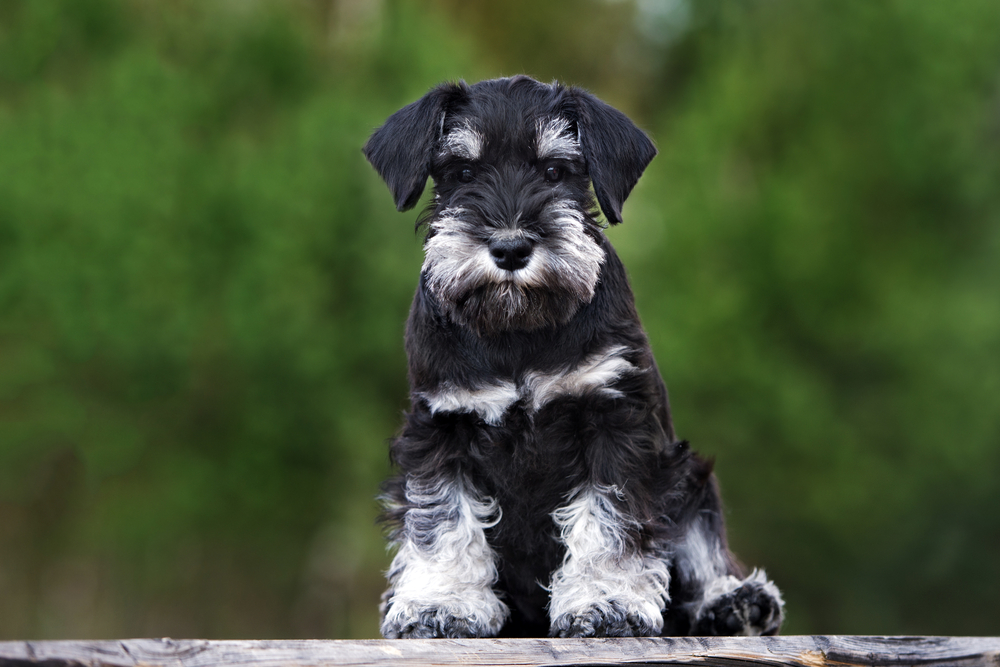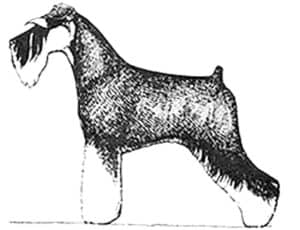
Miniature Schnauzer puppy. Photo: Otsphoto/shutterstock
Classification
The Miniature Schnauzer is classed as Group 6 (Utility) by the Australian National Kennel Council (ANKC).
History of the Miniature Schnauzer
“The Schnauzers” (pronounced “snout sirs”) reflects the fact that there are actually three breeds: the Standard Schnauzer, the smaller Miniature Schnauzer and the larger Giant Schnauzer.
The Standard is so named because it was the first of the breeds, believed to have originated in the 1400s in the regions of Bavaria and Wurttemberg in southern Germany-central Europe; it was developed from the crossing of German Poodle, Grey Wolf Spitz and Wire Haired Terrier
(German Pinscher), primarily as a ratter, droving and herding breed. The long-established Schnauzer types of dogs are represented in artworks as early as the late 1400s and in Stuttgart, a statue of “The Nightwatchman and His Dog” dated 1620 depicts an easily identifiable Schnauzer.
From the original “standard size” the Miniature and Giant Schnauzers were developed. The Miniature Schnauzer was developed to be smaller, more compact size for ratting by combining it with the Affenpinscher and Miniature Poodle. The first recorded Miniature Schnauzer appeared in 1888, and the first exhibition was held in 1899.
The three sizes are still instinctive ratters and excellent watchdogs while being reliable, loyal family pets. In fact, the characteristic very short tails and cropped ears came about to avoid rat bites, which were not only painful but could transfer rabies; in addition, the tails of the Standard and Giant were prone to injuries. The Schnauzer and Giant Schnauzer exhibit a formidable appearance to intruders and the Miniature vociferously warns of strangers.
The Schnauzer was first introduced into Australia in 1934 by Mr A Hordern who imported three Standard Schnauzers. One litter was bred but breeding did not continue. The Miniature Schnauzer was brought to Australia by Mrs I Rees of Casa Verde Kennels in the 1960s, Eng/Aust Ch Gosmore Wicket Keeper, who sired several champions.
Physical characteristics of the Miniature Schnauzer

Miniature Schnauzer. Image: ANKC
The ANKC describes the breed standard as sturdily built, robust, sinewy, nearly square, (length of body equal to height at shoulders). Expression keen and attitude alert. Correct conformation is of more importance than colour or other purely ‘beauty’ points. It is well balanced, smart, stylish and adaptable.
The coat is harsh, wiry and short enough for smartness with a dense undercoat. The hair is clean on the neck and shoulders, ears and skull. Harsh hair on legs. Furnishings fairly thick but not silky.
The ideal height for the male dog is 36 cms (14 ins) and the female dog is 33 cms (13 ins).
Colours of the Miniature Schnauzer
The colours are:
- pepper and salt, shades range from dark iron grey to light grey. Hairs banded dark/light/dark. Dark facial mask to harmonise with corresponding coat colour.
- Pure Black.
- Black and silver with solid black with silver markings on eyebrows, muzzle, chest, brisket, forelegs below the point of the elbow, inside of hind legs below stifle joint, vent and under the tail.
- White.
Good pigmentation essential in all colours.
Personality traits of the Miniature Schnauzer
The ANKC describes the temperament as alert, reliable and intelligent. Primarily a companion dog.
The Miniature Schnauzer is generally a well-tempered dog, with high energy levels and an enthusiastic attitude towards people and animals around it. They are feisty dogs, and do not like to be left alone for long periods, and require interaction and company to stay happy. He is a guard dog with the heart of a lion and will differentiate between your friends and enemies.
All three Schnauzer breeds can be good with children as long as they are positively socialised with kids as puppies.
The Standards and Giants are slow to mature and can, therefore, be quite a handful until normally in their prime at 2-3 years of age, whilst the Miniature will be mature by twelve months of age.
Note: All dogs are individuals. While there is a great difference between dog breeds there is also a difference in temperament within breeds. Temperament is affected by a number of factors, including heredity, training, and socialisation.
Care for the Miniature Schnauzer
Diet – How much your adult dog eats depends on his size, age, build, metabolism, and activity level. The quality of dog food you buy also makes a difference–the better the dog food, the further it will go toward nourishing your dog and increase your dog’s longevity. Discuss with your veterinarian and a responsible breeder about the best diet that is appropriate for a Miniature Schnauzer’s life stage from puppy to adult to senior. Clean, fresh water should be available at all times.
Feeding the dog low- or non-fatty and unsweetened foods may help to avoid health issues associated with high-fat levels.
Grooming – To keep your dog looking great, clipping and grooming a Miniature Schnauzer is recommended every 6 weeks. In between clips to maintain your dog’s appearance, you need to brush the coat regularly.
Shedding – Low shedding.
Exercise and Games – The Miniature Schnauzer is full of energy, and requires daily walks, however, they do not need to be strenuous as the size of the dog means that although it is energetic, it can’t keep going forever and a 30-40 minute walk should be suitable. This highly trainable breed will enjoy dog sports including agility and competition obedience. Miniature Schnauzers also participate in earthdog trials and often excel at them. Teach your Schnauzer tricks — he’s a great tricks dog.
Training for the Miniature Schnauzer
The Miniature Schnauzer is an attentive and clever dog that picks up new tricks and lessons with ease. While dog training is imperative for the development of an acceptable temperament and socialisation skills, it’s also a stimulating and exciting pastime for this incredibly trainable dog breed.
Dog training is a great way to bond with your dog. Start training your puppy early using positive reinforcement dog training methods. Socialisation with gradual introductions to dogs, people, other animals and things is essential.
Miniature Schnauzer health issues
A UK Kennel Club survey puts the median lifespan of Miniature Schnauzers at a little over 12 years. About 20% lived to >15 years. While generally a healthy breed, Miniature Schnauzers may suffer health problems:
- Associated with high-fat levels including hyperlipidemia, which may increase the possibility of pancreatitis, though either may form independently. Diabetes, bladder stones and eye problems.
- Comedone syndrome, a condition that produces pus-filled bumps, usually on their backs, which can be treated with a variety of methods.
- Miniature Schnauzers should have their ears dried after swimming due to a risk of infection, especially those with uncropped ears; ear examinations should be part of the regular annual checkup.
- Miniature Schnauzers are also prone to von Willebrand disease, an inherited bleeding disorder that occurs due to qualitative or quantitative deficiency of von Willebrand factor, a multimeric protein that is required for platelet adhesion.
Talk to a veterinarian about health issues for this breed.
Note: While good breeders cannot guarantee the health of their pups, they will utilise genetic testing of their breeding stock to reduce the likelihood of inherited disorders in their puppies.
Suitability of the Miniature Schnauzer as a pet
The Miniature Schnauzer is a suitable dog for families living in apartments and small living spaces. Because of his size, he can be a good city dog but he needs daily exercise.
It’s short, wiry hair also means it is low shedding, also making it a perfect dog for families with allergies. Furthermore, it’s inquisitive and kind temperament also make it the perfect dog for young children (as long as they are positively socialised as puppies and interaction is supervised).
Never leave a puppy or adult dog alone with your young child! If you are unable to supervise, then separate your pup and child. Crate training your puppy to give him a safe and fun space to be on his own for short periods is recommended.
Miniature Schnauzer adoption in Australia
Schnauzer Club of NSW (Rescue)
Miniature Schnauzer Club of NSW (Rescue)
More details on the Miniature Schnauzer dog breed
Australian National Kennel Council
Miniature Schnauzer Club of NSW


